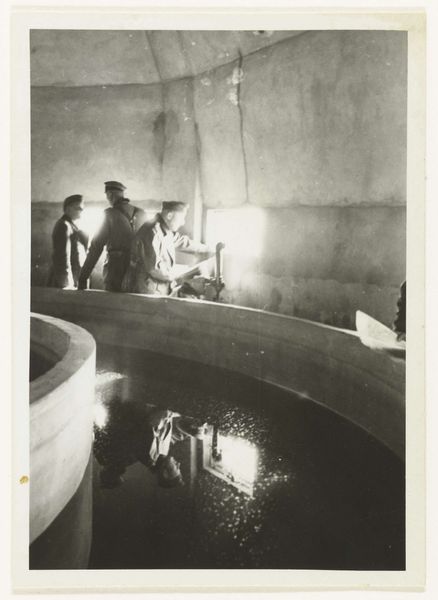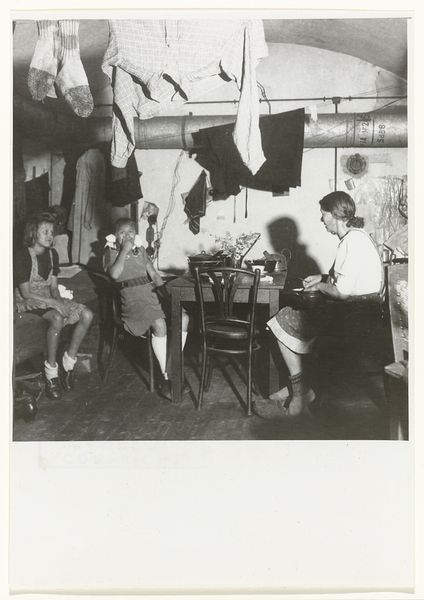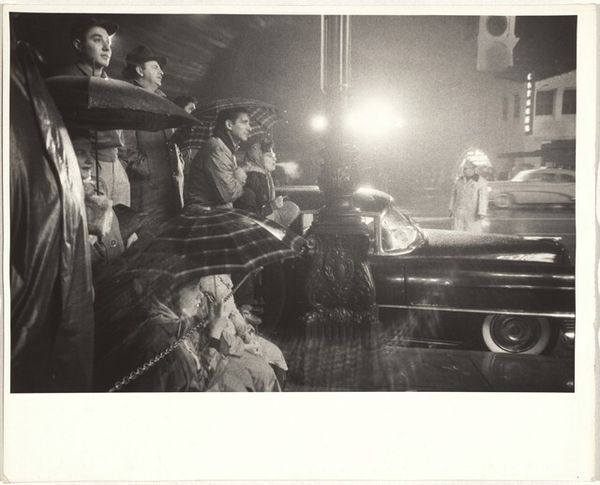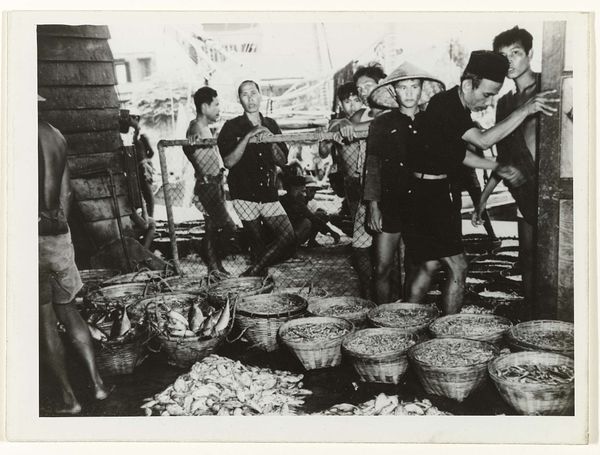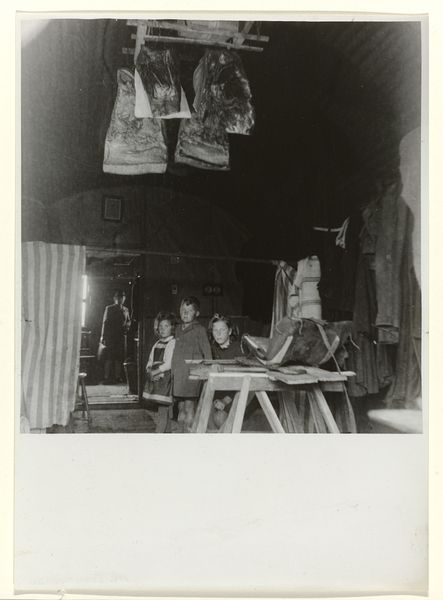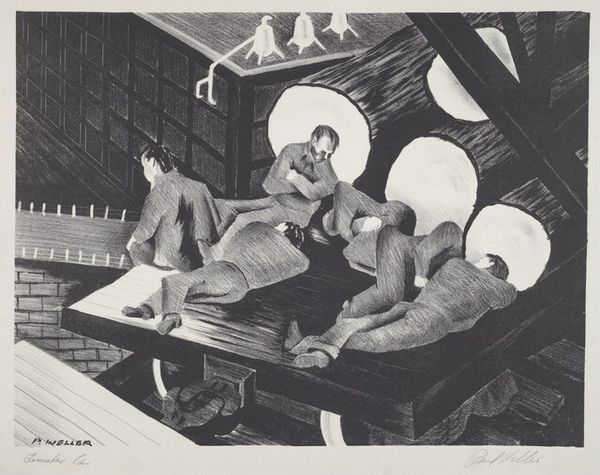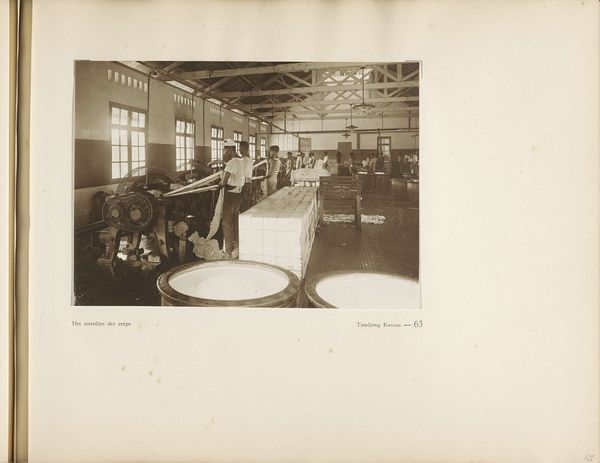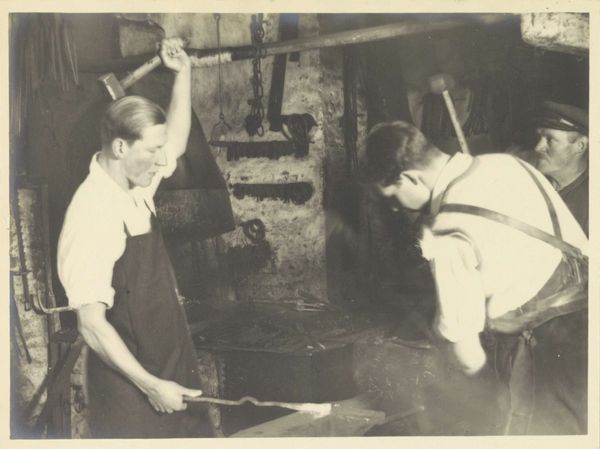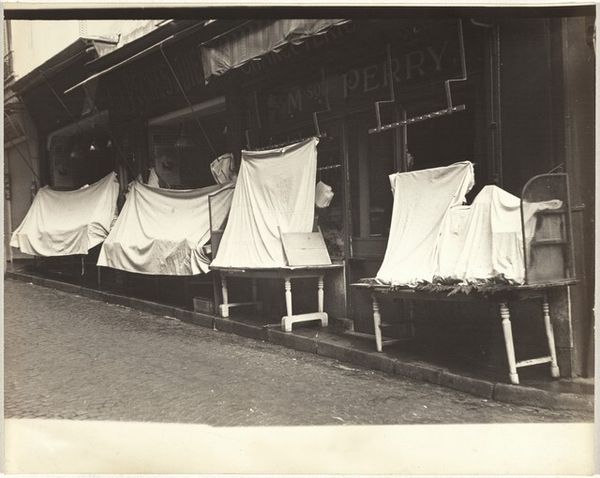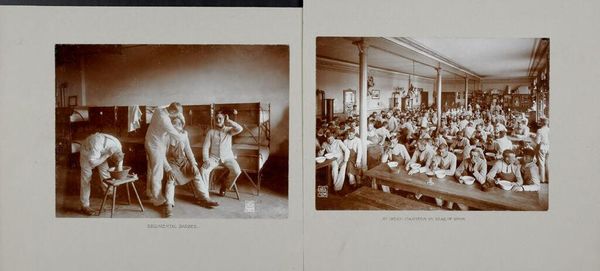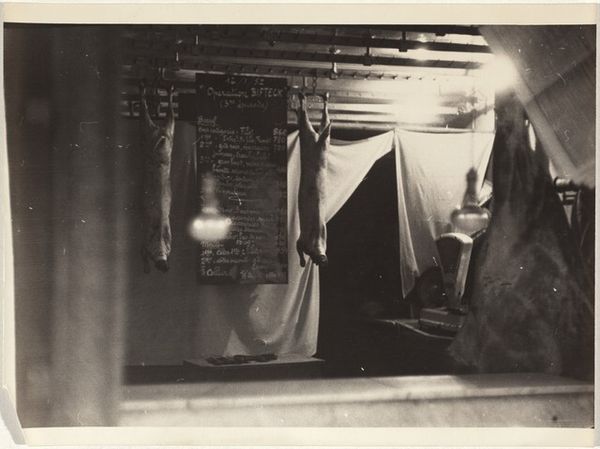
photography, gelatin-silver-print
#
archive photography
#
photography
#
gelatin-silver-print
#
realism
Dimensions: height 12 cm, width 16.8 cm, height 16 cm, width 22.2 cm
Copyright: Rijks Museum: Open Domain
Curator: Here we have a gelatin-silver print titled "Wasplaats van het interneringskamp te Makassar," or "Washing Place of the Internment Camp in Makassar," created between 1945 and 1946 by Anefo. Editor: It feels incredibly raw. The image has an immediacy; a damp, almost suffocating intimacy that’s hard to ignore. So many bodies… and it makes me reflect on my privilege now, walking through this gallery. Curator: Indeed. This photograph captures a utilitarian scene, one deeply rooted in the institutional realities of the Makassar internment camp in Indonesia post-World War II. This wasn’t simply about hygiene; it was about reclaiming humanity in a space designed to strip it away. Water has often signified purity, a new beginning. Here, amidst the stark environment, we see people engaging in a cleansing ritual, finding small solace within confines of incarceration. Editor: Look at the bare feet on what looks like a perpetually wet floor. This feels like an act of forced collectivity, doesn’t it? Stripped of privacy and yet, within the group, each gesture seems fiercely individual - a small act of rebellion against the imposed conformity. Curator: Precisely. Also, consider the sign posted in the background – likely conveying instructions or regulations. These camps attempted to regiment every aspect of life and served as reminders of lost sovereignty. It underscores how the mundane task of washing becomes laden with socio-political implications. The picture challenges us to think about how social control can extend to every element of experience. Editor: I am struck by how much hope lives in their eyes, even with everything. It challenges us to not see them only as victims, but individuals facing the times. What a powerful statement on how ordinary humanity resists suppression, it persists and transforms into cultural memory. Curator: Absolutely. Photography provides an intimate link across time, which allows us a visceral experience, a sense of being present amidst this. And that connection—it shapes and changes how we remember and represent our histories. Editor: Yes, looking at it through our 21st-century lens invites reflection upon collective identity, as a result of social turmoil. The image's symbols, imbued with new meanings that resonate through the decades, it is transformative.
Comments
No comments
Be the first to comment and join the conversation on the ultimate creative platform.
